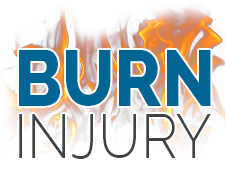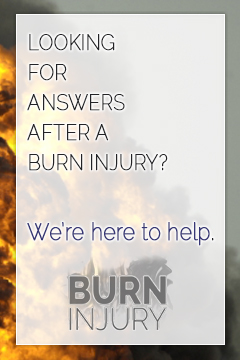Burn Injury Death
According to the American Burn Association (ABA), there are roughly 3,400 U.S. burn injury death cases each year. Burn injury death is often caused by burn complications, such as shock, organ failure, respiratory problems, or infection. In order to prevent burn injury death, severe burn patients should receive emergency medical attention to ensure a stable condition before burn wound treatment begins.
Burn Injury Death Causes
The majority of burn injury death cases result from arising complications, not the burn injury itself. Shock is a common cause of burn injury death. Burn injury death from shock typically occurs within a week of the incident.
Burn Shock
Burn shock occurs when the patient’s body does not receive adequate oxygen supply. Treating burn shock is often critical in the prevention of burn injury death. Burn shock may be caused by hypovolemia, or low blood volume due to damaged blood vessels. Burn shock may also occur as a result of sepsis, which is a bodily response to burn infection.
Burn Infection
Infection is one of the leading causes of burn injury death and complication. This is because the skin plays a vital role in protecting the body from airborne bacteria, fungi, and other pathogens. In patients with severe burns, open wounds create vulnerability for pathogens to enter the patient’s body and cause infection. Infection may also occur during treatment, such as pneumonia from breathing tubes or urinary tract infections from bladder catheters.
Other burn complications leading to death include:
- Sepsis from infection
- Respiratory failure
- Anoxic brain injury due to lack of oxygen
- Hypothermia, or dangerously low body temperature
Residential Burn Injury Death
The Centers for Disease Control and Prevention (CDC) state that in 2009, roughly 85 percent of burn injury death cases occurred in the home. In these cases, the majority of deaths occur as a result of inhaling smoke and toxic gases as opposed to burn injuries. Burn injury death cases from residential fires have significantly reduced over the decades. However, experts believe that a large number of these deaths are preventable with the implementation of household fire safety techniques.
Residential Fire Risk Factors
The CDC estimates that 47 percent of residential burn injury deaths occur in homes that do not have smoke alarms. The majority of residential fires occur in the winter months. These fires are often caused by cooking and open heat sources such as candles and fireplaces. Additionally, it is estimated that roughly 40 percent of residential burn injury deaths are related to the consumption of alcohol.
Sources:
“Burns and Traumatic Injury.” National Institutes of Health. U.S. Department of Health and Human Services, 29 Mar 2013. Web. 21 Dec 2014. <http://report.nih.gov/nihfactsheets/ViewFactSheet.aspx?csid=33>.
Chinkes, David L., et al. “The leading causes of death after burn injury in a single pediatric burn center.” Critical Care 13 (2009): R183. Academic OneFile. Web. 21 Dec. 2014.
“Fire Deaths and Injuries: Fact Sheet.” Centers for Disease Control and Prevention. U.S. Department of Health and Human Services, 11 Oct 2011. Web. 21 Dec 2014. <http://www.cdc.gov/homeandrecreationalsafety/fire-prevention/fires-factsheet.html>.
Muller, M. J., S. P. Pegg, and M. R. Rule. “Determinants of Death Following Burn Injury.” British Journal of Surgery 88.4 (2001): 583-587. Health Source: Nursing/Academic Edition. Web. 21 Dec. 2014.













